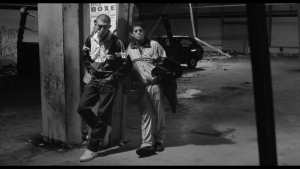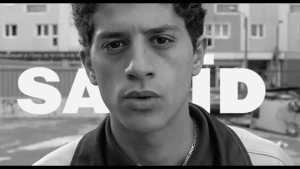I’ve been thinking a lot about space recently. Not the endless cosmos, the scope and size of which seem unfathomable. No, I talk here of space in a far smaller, if not more pertinent sense – the spaces in which we move, we choose to occupy and find comfort in. Here, we come across a fallacy of sorts, a societal construct of freedom of movement and association that dupes us into thinking that this level of freedom exists for all. But, unfortunately, it doesn’t take too much digging to realise that this “freedom” isn’t necessarily a product of choice but rather of circumstance. Here within this definition of space, I want to write about the timeless, borderless relevance of the seminal film by Mathieu Kassovitz, La Haine (Hatred)
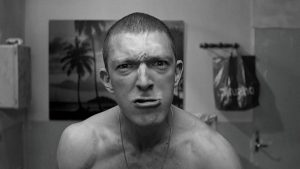
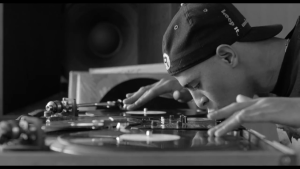
Set in the multicultural and multi-ethnic banlieue (outer-city) of Paris, amidst rising tension and pressure on the police for multiple cases of unjust and unexplainable police brutality, we are privy to a 24-hour window into the lives of Kassovitz’s representation of “black-blanc-beur” (black-white-Arab) outsiders. Vinz (Vincent Cassel), Saïd (Saïd Taghmaoui) and Hubert (Hubert Koundé) lead us as viewers through the complexities, the realities of deep-seated institutional racism. I don’t want to dwell on every single little detail in the film for too long, if anything, I’d like this article to serve as somewhat of a call to action to engage with the film yourself, as I believe there is something to relate to or some lesson to internalise regardless of your background. I want to touch on some elements of the film that tragically feel as relevant today, in South Africa and abroad, as it did when La Haine was released a full 27 years ago in 1995.
Kassovitz was driven to create the now cult classic amidst then very pertinent and prominent issues concerning police brutality and institutionalised racism after the fatal “accidental” shooting of 17-year-old Zairian immigrant Makomé M’Bowole in a police station in April 1993, all on charges of stealing a packet of cigarettes. This was but another case of what police services termed bavures (slip-ups) that disproportionately impacted the people pushed to the peripheries of Parisian society. It is here within the language used that the level of deeply ingrained racism rears its head — how we choose to incorporate language into these types of conversations matters. “Slip-ups” in the case of police brutality in France lack the level of accountability needed; the term is impersonal, dehumanising and a perfect example of the manner in which the “othered” – marginalised members of society – do not always enjoy the same rights and freedoms.
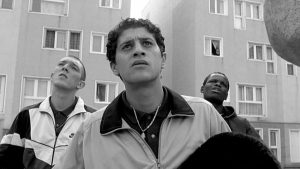
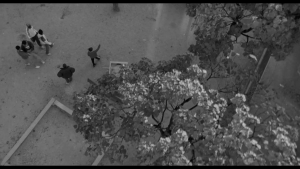
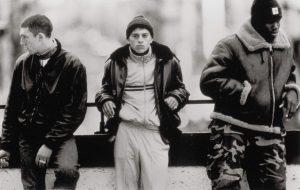
As I mentioned, I’ve recently been thinking a lot about space. About the space I take up, the spaces I am welcomed in, and the spaces I occupy due to a certain level of financial freedom. Many of these thoughts regarding the themes of La Haine as they relate to the South African context started endlessly permeating my mind after moving to Cape Town in July. Cape Town constructs such a clear and unavoidable image of space and how space and spatial allowance are used to segregate, other and marginalise. I think the concepts of Ubuntu and the Rainbow Nation die a pretty spectacular death when you engage and experience Cape Town with this idea of spatial segregation in mind. The cost of living is through the roof, and multiple clubs and bars have infamously racially profiled potential patrons, with people of colour being disproportionately affected.
La Haine is as old as I am, a young white Afrikaans man born as part of the “born-free” generation. Yes, we are part of a generation that did not experience the legal, political and forceful segregation of Apartheid in the systemic way that those who came before us did, but the remnants and roots of Apartheid are still so deeply entrenched within our country. The majority are still shackled by Apartheid policies and contemporary socio-economic warfare – placed in a disadvantaged position and lambasted by a privileged minority.


Within the policing of people of colour in South Africa, there is seemingly no interest in understanding the cause of the issue. It’s in how the security guard tails a group of black men in Kloof Street to ensure they aren’t causing trouble. The fact that during the national lockdown, the SANDF and police exercised violence in Hillbrow but seemingly ceased to have any presence in the wealthy Northern suburbs of Johannesburg. It’s in the way in which the policing of the Cape Flats is treated as a military operation rather than members of society that pledge to protect and serve. Action is, well, just reactionary.
It has also become apparent over time that the youth is becoming increasingly disillusioned by the empty promises and carefully practised PR politicians spew. It’s a ticking time bomb, one where the promises made in the past will be petrol on a burning fire of reform and change.
As a final thought, I want to mention this term that gets repeated a lot in La Haine, “Jusqu’ici tout va bien.” (So far, so good). It is used as a means to illustrate that the battle is, for the most part, being lost as the institutional status quo is being maintained. The marginalised stay the marginalised while those who benefit proudly sip away at their champagne. Unfortunately, this sentiment from La Haine rings true twenty-seven years later. Somewhere in spirit, Van Riebeeck, the VOC, Verwoerd and the architects of Apartheid, old hag Lizzy and the colonial cockroaches are repeating that phrase. “So far, so good.”
